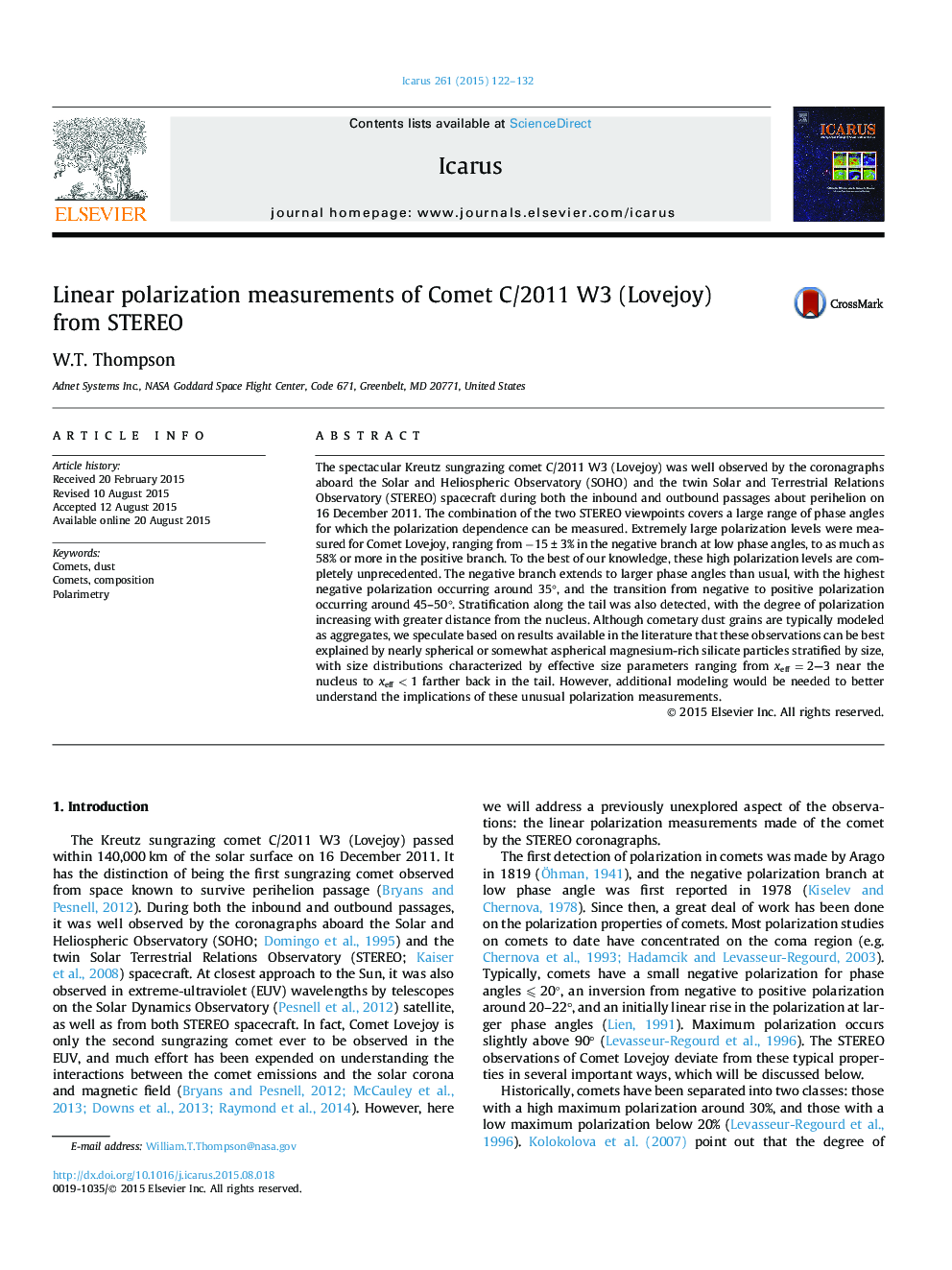| Article ID | Journal | Published Year | Pages | File Type |
|---|---|---|---|---|
| 8135993 | Icarus | 2015 | 11 Pages |
Abstract
The spectacular Kreutz sungrazing comet C/2011 W3 (Lovejoy) was well observed by the coronagraphs aboard the Solar and Heliospheric Observatory (SOHO) and the twin Solar and Terrestrial Relations Observatory (STEREO) spacecraft during both the inbound and outbound passages about perihelion on 16 December 2011. The combination of the two STEREO viewpoints covers a large range of phase angles for which the polarization dependence can be measured. Extremely large polarization levels were measured for Comet Lovejoy, ranging from â15 ± 3% in the negative branch at low phase angles, to as much as 58% or more in the positive branch. To the best of our knowledge, these high polarization levels are completely unprecedented. The negative branch extends to larger phase angles than usual, with the highest negative polarization occurring around 35°, and the transition from negative to positive polarization occurring around 45-50°. Stratification along the tail was also detected, with the degree of polarization increasing with greater distance from the nucleus. Although cometary dust grains are typically modeled as aggregates, we speculate based on results available in the literature that these observations can be best explained by nearly spherical or somewhat aspherical magnesium-rich silicate particles stratified by size, with size distributions characterized by effective size parameters ranging from xeff=2-3 near the nucleus to xeff<1 farther back in the tail. However, additional modeling would be needed to better understand the implications of these unusual polarization measurements.
Related Topics
Physical Sciences and Engineering
Earth and Planetary Sciences
Space and Planetary Science
Authors
W.T. Thompson,
